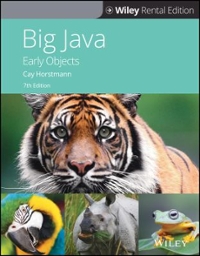Question
This laboratory work intends to familiarize you with Unix and C/C++ Standard I/Os. You will code a program that reads a given file using Unix
This laboratory work intends to familiarize you with Unix and C/C++ Standard I/Os. You will code a program that reads a given file using Unix read() system call as well as C/C++ fgetc()/fread() functions.
2. System Calls
You will use the following Unix and C/C++ Standard I/O functions. Check the specification of each function using man.
- open: is a Unix system call that opens a given file.
- read: is a Unix system call that reads a file into a given buffer.
- close: is a Unix system call that closes a given file.
- fopen: is a C/C++ standard I/O function that opens a given file.
- fgetc: is a C/C++ standard I/O function that reads one byte from a file.
- fread: is a C/C++ standard I/O function that reads a file into a given data structure.
- fclose: is a C/C++ standard I/O function that closes a give file.
3. Statement of Work
The following code is a template for measuring time elapsed to read a given file with Unix read() as well as that elapsed to read the same file with C/C++ Stardard's fread(). The program reads a file name and the number of bytes to read per read( ) or fread( ).
#include
#include
#include
#include
#include
#include
#include
using namespace std;
struct timeval start, end; // maintain starting and finishing wall time.
void startTimer( ) { // memorize the starting time
gettimeofday( &start, NULL );
}
void stopTimer( char *str ) { // checking the finishing time and computes the elapsed time
gettimeofday( &end, NULL );
cout << str << "'s elapsed time\t= "
<< ( ( end.tv_sec - start.tv_sec ) * 1000000 + (end.tv_usec - start.tv_usec ) )
<< endl;
}
int main( int argc, char *argv[] ) {
// validate arguments
if ( argc != 3 ) {
cerr << "usage: lab3 filename bytes" << endl;
return -1;
}
int bytes = atoi( argv[2] );
if ( bytes < 1 ) {
cerr << "usage: lab3 filename bytes" << endl;
cerr << "where bytes > 0" << endl;
return -1;
}
char *filename = argv[1];
char *buf = new char[bytes];
// unix i/o
int fd = open( filename, O_RDONLY );
if ( fd == -1 ) {
cerr << filename << " not found" << endl;
return -1;
}
startTimer( );
while( read( fd, buf, bytes ) > 0 );
stopTimer( "Unix read" );
close( fd );
// standard i/o
// write the same program as unix i/o but use fopen(), fgetc(), fread(), and fclose( )
// use fgetc() if bytes == 1
return 0;
}
The following shows execution outputs when reading a file by 512, 1024, 2048, and 2096 bytes.
Complete the main() function so that the program runs as specified above.
Step by Step Solution
There are 3 Steps involved in it
Step: 1
include iostream include sys timeh include sys typesh include sys stath include fcntl h include unis...
Get Instant Access to Expert-Tailored Solutions
See step-by-step solutions with expert insights and AI powered tools for academic success
Step: 2

Step: 3

Ace Your Homework with AI
Get the answers you need in no time with our AI-driven, step-by-step assistance
Get Started


